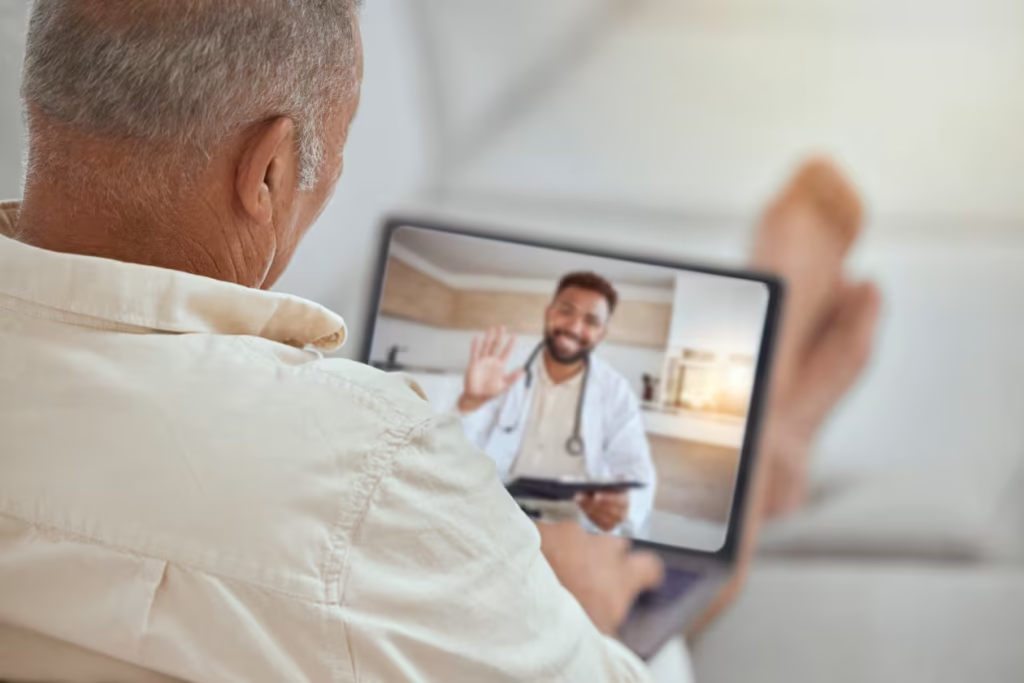Telehealth in the U.S. 2025 is no longer a backup option it’s a major part of healthcare. During the pandemic telehealth services exploded offering people an easy way to connect with doctors without leaving home. Now in 2025 telehealth has evolved improved and become a regular choice for millions of Americans.
In this article we’ll explore why telehealth in the U.S. 2025 is stronger than ever how it’s changing the healthcare system and what the future looks like for virtual medical care.
The Rise of Telehealth in the U.S. 2025
When COVID-19 hit telehealth went from being rare to essential. Patients needed safe ways to see their doctors and hospitals needed ways to reduce crowding. Fast forward to 2025 and telehealth is no longer just an emergency tool. It’s a mainstream healthcare option that people trust and use daily.
Telehealth services now cover:
- Routine doctor visits
- Mental health therapy sessions
- Prescription renewals
- Specialist consultations
- Physical therapy check-ins
Many hospitals clinics and private practices now offer telehealth options as part of their standard care packages.
Why Telehealth in the U.S. 2025 Is Thriving

Several factors are making telehealth an even bigger success today:
1. Better Technology
With faster internet better smartphones and user-friendly apps telehealth is easier and more reliable than ever. Patients can book appointments through apps video chat with doctors and even get digital prescriptions within minutes.
2. Insurance Support
In 2025 more insurance companies fully cover telehealth visits making it an affordable option for millions of Americans. Medicare Medicaid and private insurers are all including telehealth services in their regular plans.
3. Convenience and Access
Telehealth saves time and energy. People can avoid long drives missed workdays and crowded waiting rooms. For rural communities where healthcare access is limited telehealth has been a game-changer providing quicker and easier medical help.
4. Expanding Services
Telehealth isn’t just for colds and flu anymore. Specialists like dermatologists psychiatrists and physical therapists are using telehealth to monitor and treat patients remotely. Some even use AI tools to assist with diagnosis and treatment plans.
The Impact on Mental Health Care
One of the biggest success stories of telehealth in the U.S. 2025 is mental health care. Therapy sessions coaching and even support groups are now commonly done online.
Benefits for mental health services include:
- Easier access to therapists especially in rural or underserved areas
- Greater privacy and comfort for patients
- Flexible scheduling that fits into busy lives
- Reduced stigma since patients can attend sessions from home
Online mental health services have helped thousands of people who might otherwise not have gotten help.
Challenges Telehealth Still Faces

While telehealth in the U.S. 2025 has grown a lot there are still some challenges:
- Technology Gaps: Not everyone has access to fast internet or good devices especially in rural or low-income areas.
- Licensing Issues: Doctors need to be licensed in the state where their patients live which limits how far telehealth can reach.
- Privacy Concerns: Protecting patient data during online appointments is crucial and some patients worry about security.
- Personal Touch: Some conditions still need in-person exams tests or procedures that telehealth can’t replace.
Despite these challenges the healthcare industry is working hard to find solutions and improve the telehealth experience for everyone.
How Telehealth Is Changing the Doctor-Patient Relationship
One big shift in 2025 is the new style of doctor-patient communication. Instead of only seeing a doctor once or twice a year patients are having shorter more frequent virtual check-ins.
Benefits of this approach:
- More proactive health management
- Early detection of problems
- Stronger relationships between patients and providers
- Personalized care plans based on ongoing monitoring
Patients feel more supported and doctors can give better care thanks to regular touchpoints.
Telehealth and Remote Monitoring
Another exciting trend is the growth of remote patient monitoring. Patients with chronic conditions like diabetes heart disease or asthma can now use smart devices to track their health at home. These devices automatically send information to their doctors who can adjust treatment plans as needed.
Remote monitoring tools include:
- Smart blood pressure cuffs
- Continuous glucose monitors
- Heart rate and oxygen level trackers
- Smart inhalers for asthma
This technology is helping people stay healthier avoid hospital stays and manage conditions better from home.
What the Future Looks Like for Telehealth in the U.S.
Experts predict that telehealth will only get bigger and better in the coming years. Some likely developments include:
- AI-Powered Diagnoses: Artificial intelligence helping doctors analyze symptoms and medical history faster.
- Expanded Licensing: National licenses for telehealth providers allowing them to treat patients across state lines.
- More Wearable Tech: New devices that track more health data helping doctors make better decisions.
- Virtual Reality Therapy: Using VR for physical therapy rehabilitation and mental health treatments.
As the technology improves and more Americans get comfortable with virtual healthcare telehealth is set to become a standard part of everyday life.
Final Thoughts on Telehealth in the U.S. 2025
Telehealth in the U.S. 2025 has proven that it’s not just a temporary solution it’s the future of healthcare. With better technology greater access and expanded services Americans are embracing telehealth for its convenience speed and effectiveness. While there are still hurdles to overcome the benefits are clear.
As more people experience the ease of virtual care telehealth is becoming a trusted part of the American healthcare system one virtual visit at a time
Also read – Leon Harris Health: A Closer Look at the Beloved News Anchor’s Recovery






